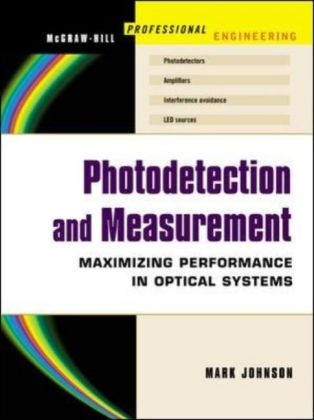Read more
Photodetection techniques are becoming increasingly necessary for electronics design work
This reference provides a practical "rules of thumb" approach to making accurate optical measurements with equipment commonly found in labs and companies.
Considers the full chain of equipment: photodetectors, amplifiers, LED sources, electronic drives, basic optics, interference screens, and data acquisition systems
How to make use of the simplest detector in every situation
Noise reduction techniques
Building in stability
List of contents
Chapter 1: Photodetection Basics Chapter 2: Amplified Detection Circuitry Chapter 3: Fundamental Noise Basics and Calculations Chapter 4: Interlude -- Alternative Circuits and Detection Techniques Chapter 5: System Noise and Synchronous Detection Chapter 6: Some Electronic Circuits and Construction Techniques to Get You Going Chapter 7: Control of Ambient Light Chapter 8: Stability -- Temperature Compensation Techniques Chapter 9: Contamination and Industrial Systems Chapter 10: Measured Modulation Chapter 11: Multiple-Channel Detection APPENDIX A: CALCULATIONS USING THE COMPLEX FREQUENCY REPRESENTATION APPENDIX B: WHAT DOES THE SPECTRUM ANALYZER MEASURE? APPENDIX C: BLUFF YOUR WAY IN DIGITAL SIGNAL PROCESSING APPENDIX D: THE WEIGHING PROBLEM REFERENCES INDEX ABOUT THE AUTHOR
About the author
Mark Johnson, Ph.D (Chesire, UK) is an independent consultant in opto-electronics and measurement innovation. He is a Visiting Professor Salford and St. Etienne Universities. He has managed corporate research laboratories in the UK, US, and Germany.
Summary
Photodetection techniques are increasingly necessary for all electronics design work -- and they are not taught in standard engineering curricula. This book provides a practical "rules of thumb" approach to making accurate optical measurements with simple and inexpensive equipment.

